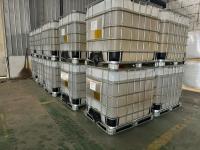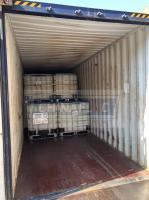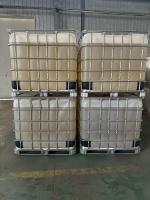Our Products
Product Center / polyamine FL3240 can be replaced by Chinafloc--POLYAMINE

Polyamine (FL3240) is a high-performance liquid cationic polymer primarily used as a coagulant and charge neutralizer in water and wastewater treatment processes. It belongs to the polyamine family, which consists of polymers containing multiple amine groups along their molecular chains. These positively charged functional groups allow Polyamine FL3240 to interact effectively with negatively charged particles, colloids, and organic matter in water systems. Through charge neutralization and bridging mechanisms, Polyamine FL3240 promotes rapid aggregation of fine particles into larger flocs that can be efficiently removed through sedimentation, flotation, or filtration. Its performance characteristics make it an essential chemical for various sectors such as municipal water treatment, industrial wastewater purification, sludge dewatering, mining, paper manufacturing, and textile processing.
The main application of Polyamine FL3240 is in water and wastewater treatment, where it functions as a primary coagulant or coagulant aid for the removal of suspended solids, turbidity, organic matter, and color. Unlike inorganic coagulants such as aluminum sulfate or ferric chloride, Polyamine FL3240 offers several advantages: it produces less sludge, works effectively over a broader pH range, and does not increase the salt content of treated water. It is particularly useful in treating waters with low turbidity and high organic content, where traditional inorganic coagulants may be less efficient. The polymer’s cationic charge density allows it to destabilize negatively charged particles such as clay, silt, colloidal silica, natural organic matter, and microorganisms. Once destabilized, these particles aggregate into flocs that can settle or float, allowing for easy separation and improved water clarity.
In municipal wastewater treatment, Polyamine FL3240 is commonly applied in both primary and secondary clarification processes. During primary treatment, it enhances the sedimentation of suspended solids and accelerates the separation of sludge from wastewater. In secondary treatment, it improves the performance of biological systems by promoting the settling of activated sludge and preventing sludge bulking or floating. When used in tertiary treatment, Polyamine FL3240 aids in the removal of residual suspended matter and phosphorus, achieving higher effluent quality suitable for discharge or reuse. Its high charge density and molecular weight make it compatible with various wastewater compositions, from domestic sewage to complex industrial effluents. Furthermore, it is non-toxic at recommended doses, making it appropriate for use in water treatment facilities adhering to environmental and safety regulations.
In industrial wastewater treatment, Polyamine FL3240 is widely used in sectors such as food processing, chemical manufacturing, petrochemicals, power generation, steel, and pharmaceuticals. Many industrial wastewaters contain emulsified oils, organic pollutants, heavy metals, and color-causing compounds that are difficult to remove by physical means alone. Polyamine FL3240 acts as an effective coagulant to break emulsions, precipitate contaminants, and clarify process water. It is also frequently used in combination with anionic or nonionic flocculants (such as anionic polyacrylamide) to achieve superior clarification and dewatering results. In oily wastewater, Polyamine FL3240 destabilizes oil-water emulsions and facilitates coalescence of oil droplets for efficient separation. Its versatility makes it suitable for use in dissolved air flotation (DAF) systems, where it enhances the attachment of air bubbles to solids, increasing flotation efficiency.
In sludge dewatering, Polyamine FL3240 plays a key role in improving the efficiency of mechanical dewatering equipment such as centrifuges, belt presses, and filter presses. By neutralizing the negative charges on sludge particles, it enhances the formation of dense, compact flocs that release water more readily during mechanical separation. This results in reduced sludge volume, higher dry solid content, and lower disposal costs. The polymer’s performance in sludge conditioning also minimizes equipment wear, reduces energy consumption, and improves overall system throughput. In facilities using both cationic and anionic polymers, Polyamine FL3240 is often employed as a pre-coagulant to improve the subsequent action of high-molecular-weight flocculants.
In the mining and mineral processing industry, Polyamine FL3240 is used to clarify process water, recover valuable minerals, and treat tailings. It aids in the separation of fine mineral particles from water by neutralizing surface charges, allowing for faster settling and clearer overflow water. In mineral processing circuits, clean recycled water is essential for maintaining flotation performance and reducing reagent consumption. Polyamine FL3240 helps achieve this by removing suspended solids and fine clays from process streams. It is also utilized in coal washing plants to improve sedimentation and water recovery, reducing environmental discharge loads and promoting resource reuse.
In the paper and pulp industry, Polyamine FL3240 serves as a retention and drainage aid. It enhances the retention of fillers, fines, and fibers during paper formation, thereby improving sheet quality and reducing waste. In the white water loop, it helps control suspended solids and improves water clarity. Additionally, in paper mill wastewater, Polyamine FL3240 acts as a coagulant to remove color, organic materials, and suspended matter prior to discharge or recycling. Its strong cationic charge makes it highly effective in capturing anionic trash and colloidal substances that interfere with papermaking chemistry.
The textile and dyeing industry also benefits from Polyamine FL3240’s high charge density and color removal ability. Dyeing and finishing effluents often contain soluble dye molecules, surfactants, and organic additives that impart intense color and high COD (chemical oxygen demand) to wastewater. Polyamine FL3240 interacts electrostatically with these negatively charged dye molecules, leading to rapid coagulation and precipitation. The treated water becomes significantly clearer, with reduced color intensity and improved biodegradability. This makes Polyamine FL3240 an excellent choice for pre-treatment before biological treatment or final discharge.
Additionally, in the oil and gas industry, Polyamine FL3240 is used in produced water treatment and desalination systems. It assists in removing suspended solids, hydrocarbons, and iron oxides, improving water quality for reinjection or discharge. Its compatibility with other oilfield chemicals and tolerance to salinity and temperature make it suitable for upstream and downstream operations alike.
Overall, the main application of Polyamine FL3240 centers on coagulation, charge neutralization, and solid-liquid separation in water and wastewater systems. Its broad usability across municipal, industrial, mining, and paper sectors stems from its ability to efficiently remove turbidity, organic contaminants, and color, while minimizing sludge production and treatment costs. Compared to inorganic coagulants, Polyamine FL3240 offers faster floc formation, lower residual metals, and better compatibility with downstream flocculants. This makes it an indispensable component of modern water treatment programs focused on efficiency, sustainability, and regulatory compliance.





576_small.jpg)